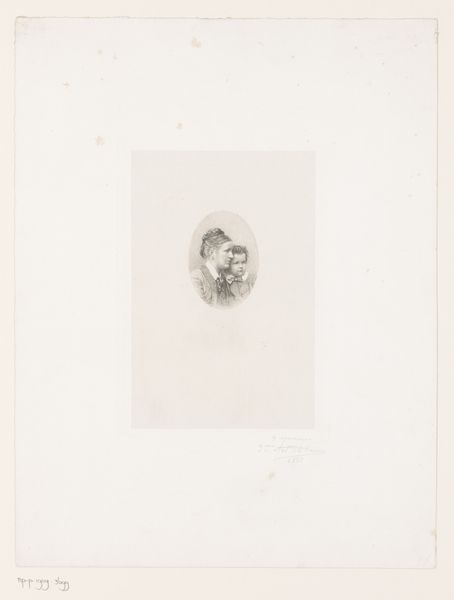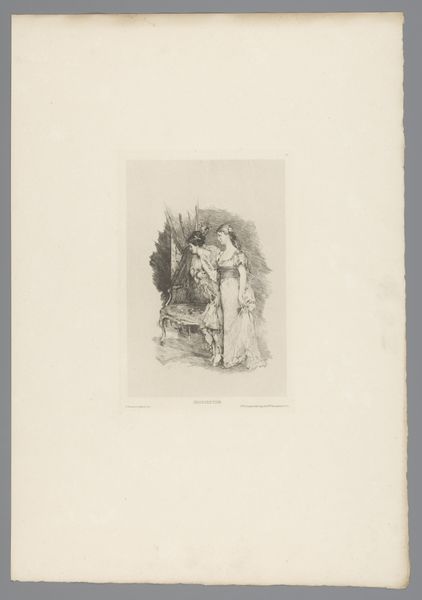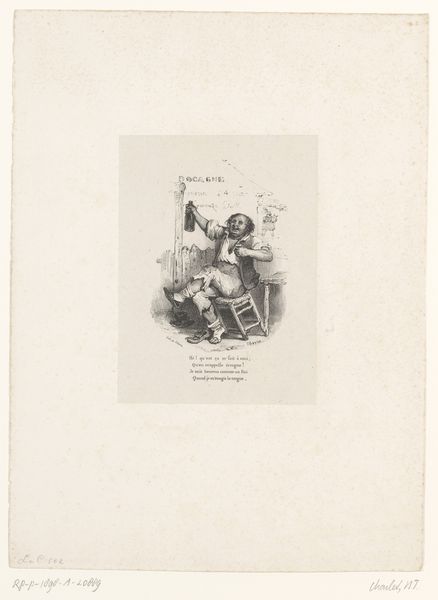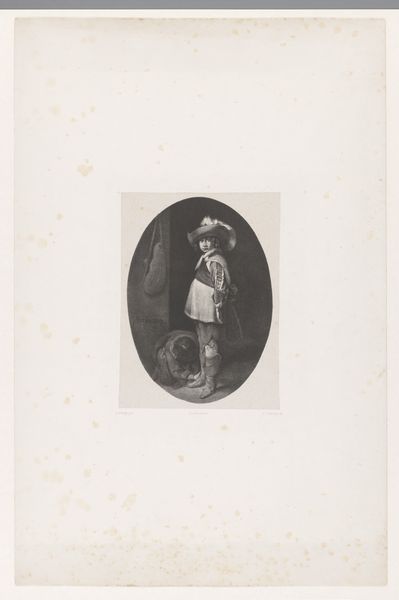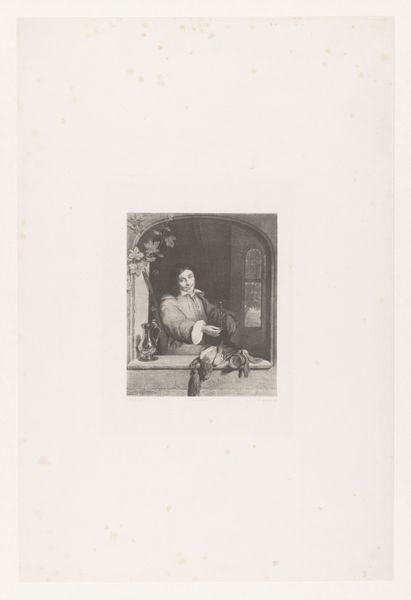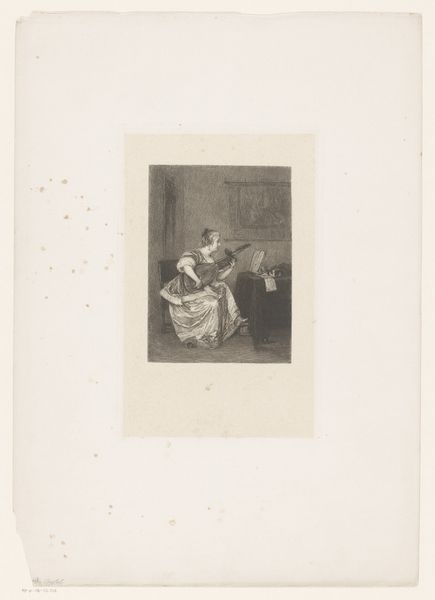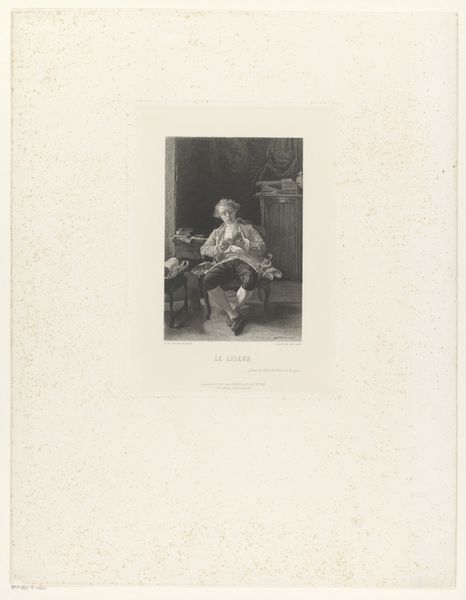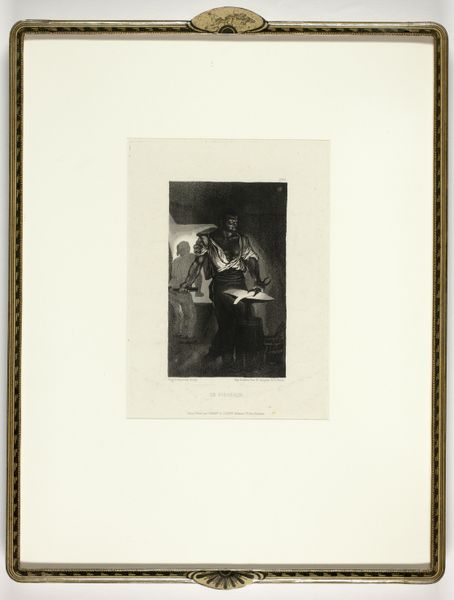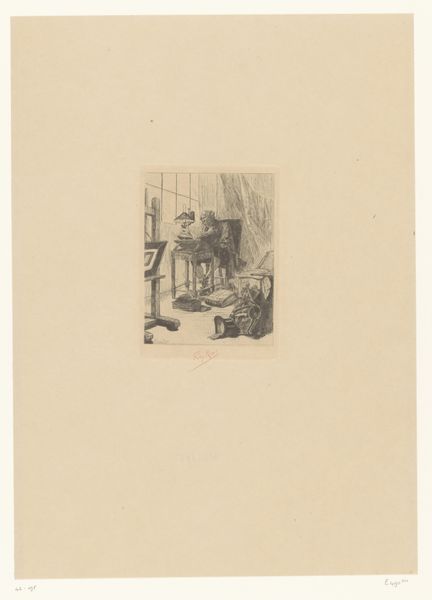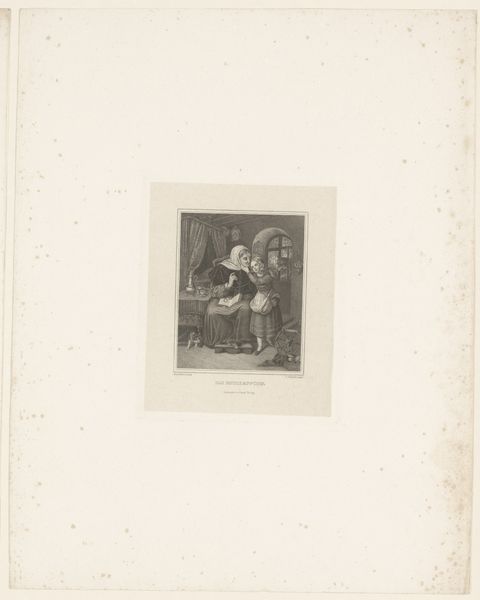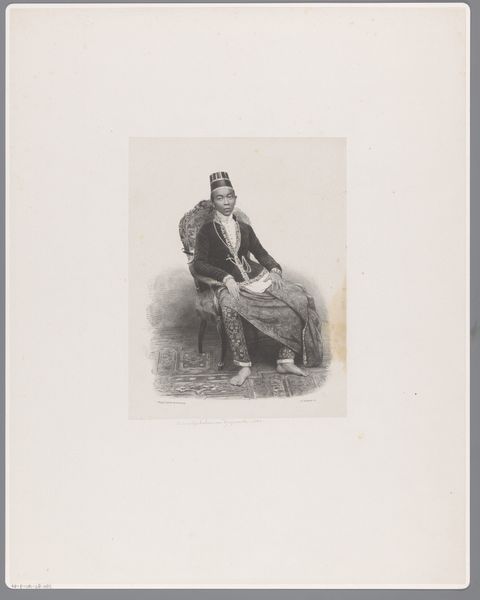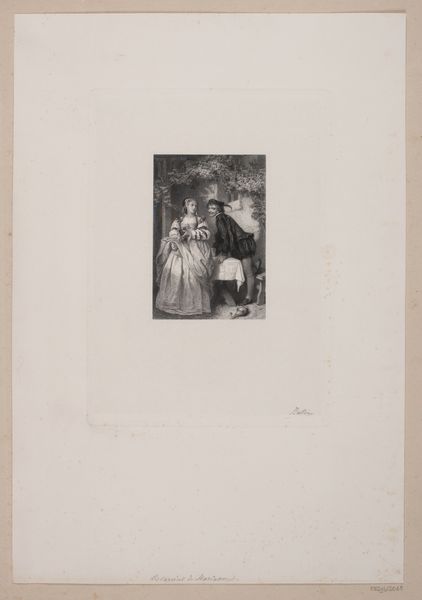
print, etching, engraving
#
portrait
# print
#
etching
#
group-portraits
#
engraving
#
realism
Dimensions: 180 mm (height) x 129 mm (width) (bladmaal)
Curator: The piece before us is a print attributed to Joel Ballin, titled "Storfyrst Alexis og hertuginden af Edinburgh." It’s estimated to have been created sometime between 1859 and 1884, a rather wide window. What strikes you immediately? Editor: The grayness of the print lends an almost mournful atmosphere to the piece, like viewing faded memories. Looking closely, it also appears that this piece uses etching and engraving to create tonal values on a two-dimensional plane, indicating mass production processes of making images affordable in 19th-century Copenhagen. Curator: Indeed. The figures depicted are Grand Duke Alexei Alexandrovich of Russia and the Duchess of Edinburgh. Consider the potent symbols inherent in these individuals. He, a representative of the vast Russian Empire, she, connected to the British Crown—major players on the European stage. They would have stood for particular values to 19th century viewers, a marriage perhaps symbolic of shifting imperial politics? Editor: The image captures not only individual identities, but dynastic networks. Note how much labor would go into such prints. Multiple technicians were involved in this factory style workshop, which is why it would be available to purchase. It's the visual depiction of royal excess rendered reproducible for bourgeois consumption. Curator: An astute point! The jewels, military finery, their careful dress-- all broadcast wealth, rank, and lineage. The artist uses realistic styles as a marker of true, physical form. Editor: To that point about realism... I am suspicious of any 'realism' that makes class relations and wealth accumulation seem effortless, instead of illustrating the complex material processes involved in its production and circulation. How might it obfuscate other harsh realities of the time for those consuming images? Curator: Food for thought, certainly. These realistic portrayals perhaps reinforce those very power structures and obscure lived experiences in the late 19th century. It causes one to pause, looking at this formal depiction, on which stories it privileges over others, those not deemed important to translate through lasting visual means. Editor: Absolutely. It is so important to critically unpack who is being depicted here, but also what were the historical processes of making this object—etching, engraving, printing? Ultimately these aspects dictate whose image had social and economic worth. Curator: Thank you, by tracing materiality, production and symbols of visual form in this piece, we can continue to unlock a more complete narrative of its history.
Comments
No comments
Be the first to comment and join the conversation on the ultimate creative platform.
